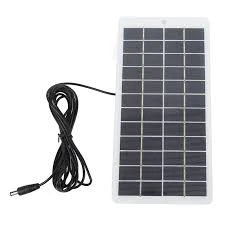solar panel system size
Understanding Solar Panel System Size A Key Factor in Maximizing Energy Efficiency
As the world continues to shift towards renewable energy sources, solar power has emerged as a leading option for sustainable energy generation. The effectiveness and efficiency of a solar energy system largely depend on its size. Understanding solar panel system size is crucial for homeowners and businesses alike, as it impacts energy output, cost efficiency, and overall effectiveness in meeting energy needs.
What is Solar Panel System Size?
The size of a solar panel system refers to the total capacity of the solar panels measured in kilowatts (kW) or megawatts (MW). This capacity indicates the amount of electricity the system can generate under ideal conditions. A larger system will produce more electricity, while a smaller system may only meet some of the energy demands of a home or business.
When determining the appropriate size for a solar panel system, it’s essential to consider several factors, including energy consumption, available roof space, panel efficiency, and geographical location. A well-sized solar system can significantly reduce energy bills and minimize carbon footprints.
Calculating Energy Needs
The first step in figuring out the right solar panel system size is to calculate energy consumption
. Homeowners can review their monthly electricity bills to determine their average energy usage in kilowatt-hours (kWh). Businesses typically have more complex energy needs, considering various operational hours and equipment usage.For instance, if a household consumes an average of 800 kWh per month, it will require a solar panel system capable of generating that amount of energy. To achieve this, calculations involving peak sun hours are necessary. Peak sun hours represent the average number of hours per day when solar irradiance is at peak levels, typically around 4 to 6 hours, depending on geographical location.
Using these calculations, a homeowner can determine the necessary system size. If the average daily usage is around 26.7 kWh (800 kWh divided by 30 days), a system that produces this amount can be estimated. If the location receives about 5 peak sun hours per day, the required solar system size would be around 5.34 kW (26.7 kWh divided by 5 hours).
solar panel system size

Considering Panel Efficiency and Space
The efficiency of solar panels also plays a critical role in determining system size. Higher efficiency panels generate more electricity per square foot, meaning less space is needed to produce the same amount of energy. As a result, homeowners with limited roof space may opt for high-efficiency panels to maximize their energy generation.
For example, if a high-efficiency panel has an output of 400 watts, fewer panels will be needed to achieve the desired system size compared to lower efficiency options. However, higher efficiency panels typically come at a higher upfront cost, so it is essential to consider the balance between space, efficiency, and budget.
Geographical Impact on System Size
Understanding the geographical location is vital when sizing a solar panel system. Areas with higher sun exposure generally allow for smaller systems since they receive more sunlight, thus generating more electricity. In contrast, regions with frequent cloud cover or shorter daylight hours may require larger systems to meet the same energy needs.
Moreover, local regulations, climate conditions, and the availability of sunlight throughout different seasons should be evaluated to ensure the system is designed for year-round efficiency.
The Importance of Professional Consultation
While calculating system size can be done individually, consulting a solar energy professional is often beneficial. Experts can perform a shade analysis, evaluate roof structure, and provide tailored solutions that account for specific energy needs, local incentives, and financing options.
In conclusion, understanding solar panel system size is essential for maximizing energy efficiency and reducing electricity costs. By accurately determining energy needs, considering factors like panel efficiency and geographical conditions, and possibly working with solar professionals, homeowners and businesses can optimize their investment in solar technology. With the right solar system size, the transition to renewable energy becomes not only feasible but also advantageous for sustainable living.
-
Understanding the Advantages of Solar String Inverters for Your Energy SystemNewsApr.29,2025
-
Choosing the Right PV Inverter: A Comprehensive GuideNewsApr.29,2025
-
The Future of Solar Power: Exploring Bifacial Solar PanelsNewsApr.29,2025
-
The Complete Guide to Solar Panels: Efficiency, Cost, And InstallationNewsApr.29,2025
-
The Best Options for Efficiency and Cost-EffectivenessNewsApr.29,2025
-
Harnessing the Power of Off-Grid Solar Inverters for Energy IndependenceNewsApr.29,2025







